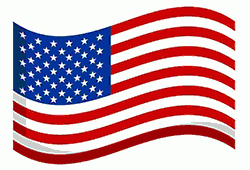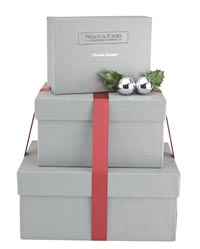Giraffe & Impala Bronze Sculptures
-
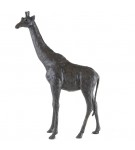
Bronze Giraffe Sculpture: Bull Giraffe (Alert Giraffe) by Jonathan Sanders
-
Edition:250
-
Size in cm:17w x 24.5h x 6d cm
$875.95 -
-
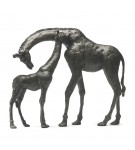
Bronze Giraffe Sculpture: Giraffe Mother and Baby by Jonathan Sanders
-
Edition:250
-
Size in cm:19w x 17h x 8d and 10w x 16h x 4.5d cm
$990.20 -
-
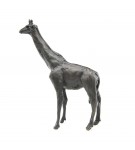
Bronze Giraffe Sculpture: Giraffe Maquette by Jonathan Sanders
-
Edition:500
-
Size in cm:7w x 9.5h x 2.5d cm
$158.70 -
-
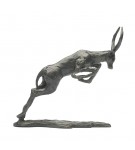
Bronze Impala Sculpture: Springing Impala by Jonathan Sanders
-
Edition:250
-
Size in cm:16w x 14h x 4d cm
$355.45 -
-
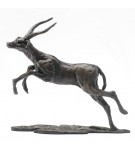
Bronze Impala Sculpture: Leaping Impala by Jonathan Sanders
-
Edition:250
-
Size in cm:14w x 14h x 4d cm
$355.45 -
Bronze Giraffe and Impala sculptures by Jonathan Sanders – head and shoulders above the rest!
Unjustly not one of Africa’s ‘Big Five’ the majestic giraffe is nevertheless a firm favourite amongst bronze collectors, safari guests and those who’s experience of Africa mostly involve David Attenborough alike.
Collectors have been asking for a long time for Jonathan Sanders to sculpt a giraffe. Which sounded like a lovely idea, but… giraffes are technically very difficult to cast in bronze.
Molten bronze in the body has a habit of cooling as it runs down slender legs and becoming solid before it reaches the feet (which means no feet, just stumps). Similarly, keeping a heavy bronze body upright on long thin legs presents a balance problem. Without going into great detail and giving away all our trade secrets (!), after some trial and error, we were thrilled to unveil Jonathan Sanders’s first giraffe in bronze – ‘Giraffe Mother and Baby’.
We are thrilled with it and it stands up unaided. With eight feet. So all round, a success we felt.
It would be virtually impossible to cast such a heavy body on such slender legs in a weaker material such as cold cast bronze or bronze resin, so Giraffe Mother and Baby perfectly demonstrates the strength and versatility of bronze as the ideal casting material of choice.
How the giraffe got its name
The giraffe's species name, camelopardalis (camelopard), is derived from its early Roman name where it was thought of as a composite creature, described as having characteristics of both a camel and a leopard. The word giraffe comes from the Arabic zarafa. As a verb it means to jump or to hurry, leading to the noun one who walks swiftly. It has also been traced to an Ethiopian word that denotes graceful one.
The Egyptians used a hieroglyph in the shape of a giraffe to indicate 'to prophecy', 'to foretell', which has been taken as evidence of its keen eyesight. Ancient Arabic words include saraphah, gyrapha, gyraffa, and zirafaand the Swahili word for giraffe is ‘twiga’—a typically phonetic word which sounds the way a giraffe looks.
The Swedish word for both Giraffe and sheriff is the same– ‘gerefa’. The word sheriff comes from the Old English word ‘scirgeref’ ( a compound of the words ‘scir’ meaning 'shire', and gerefa, meening'a reeve, a chief official of a shire’). The term 'Reeve of the Shire', scirgerefa, was later shortened to 'Sheriff'.
The reeve (or Sherriff) had authority to raise the 'hue and cry' to warn people that a crime was committed, or that a criminal was in their midst. A giraffe performs a similar function in the wild, where, as the tallest animal in the ecosystem, it oversees a local area of the African plain. Other animals stay close to giraffes and use them as watchtowers or observation posts for predators.
Another animal which perfectly demonstrates the beauty of casting in bronze is the impossibly delicate Impala. The strength of the material allows for the whole impla to leap into the air, supported only on one small foot, seemingly defying gravity.
Jonathan Sanders’s Leaping Impala bronze was launched in June 2013 along with the Running Lion and Hunting Lion sculptures and makes a wonderful set when displayed with them. It is also the same scale as Jonathan’s Running Cheetah and Flying Cheetah and has been bought set with them on many occasions.
In June 2014, we thought that Leaping Impala could do with a friend, so Springing Impala was launched and they make a very lively and eye catching pair. We would love to see a whole herd of impala leaping down a dining room table, so watch this space for new releases! If you would like to keep up to date with new releases, please let us know and we will be happy to keep you informed.
The impala is a medium sized antelope and an important prey animal for several apex carnivores including lions, leopards, hyenas, crocodiles and even pythons. An alert and wary animal, the impala becomes motionless on sensing danger, scans the vicinity with its eyes to spot the predator, and rotates its ears to catch any slight sounds. One female in a herd will often stand on guard, scanning the surroundings for danger, while the rest remain relaxed. Unlike other antelopes that flee when disturbed, the impala will try to hide itself in dense vegetation in case of any alarm. If startled into flight, an impala will cover maximum ground by leaping almost ten feet into the air, covering thirty three feet of ground in a single bound as it does so.
Only the males of the species are horned. Bachelor herds comprise non-territorial adult as well as juvenile males and can have about 30 members. The female herds consist of 15-100 individuals, and comprise of breeding herds of females and their young (including young males below four years).



